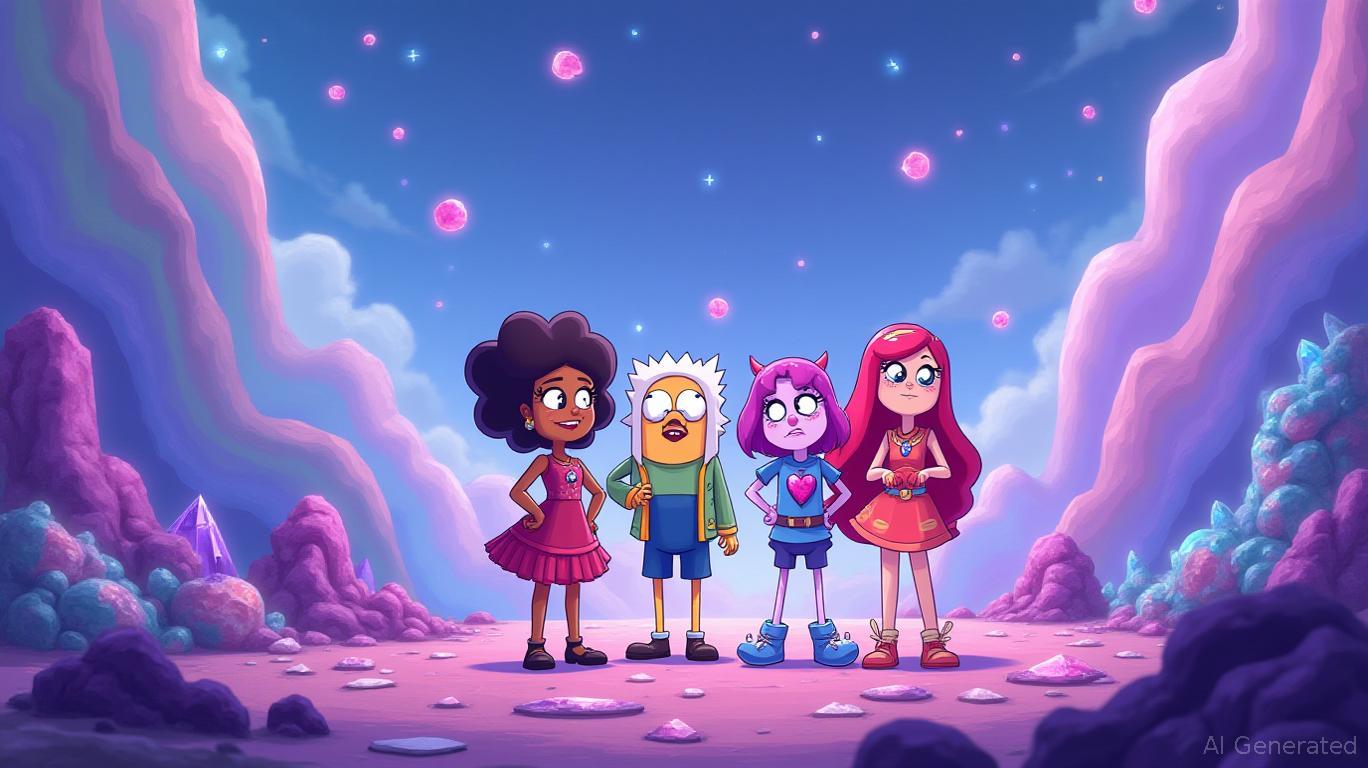Steven Universe's Resurgence: A Beacon for Undervalued Content in Streaming Markets
The cultural staying power of Steven Universe, an animated series that concluded its run in 2020, has defied the typical lifecycle of media content. Recent data reveals its audience demand remains robust, even as streaming platforms face growing pressure to demonstrate the longevity of their libraries. For investors, this phenomenon underscores a broader truth: animated franchises with inclusive, emotionally resonant storytelling and passionate fanbases are undervalued assets in a market dominated by short-term content cycles.

The Resilience of Steven Universe: Data and Demand
Despite a recent 8.3% dip in U.S. audience demand in May 2025, Steven Universe retains a demand score 31.5 times the market average, placing it in the 99.8th percentile of drama series. This “Outstanding” performance, as defined by Parrot Analytics, suggests a fanbase that remains fiercely loyal. Globally, the show's travelability is staggering: it outperforms the average TV show in Mexico, Brazil, and Canada, while its merchandising arm—such as the Summer 2025 Collection catering to over 100 countries—proves the franchise's enduring commercial viability.
Even in markets like South Korea, where demand is lower, the series maintains a 97.4th percentile ranking in children's programming. This geographic diversity hints at untapped opportunities for platforms to localize distribution strategies, leveraging the show's universal themes of love, identity, and inclusivity.
Why Steven Universe Matters for Investors
The series exemplifies a critical trend in media economics: the shift from “hit-driven” content to libraries of evergreen franchises. In a streaming landscape where subscriber growth is slowing, platforms must prioritize content that sustains engagement over years, not months. Steven Universe's ability to generate discussion—such as debates over its portrayal of vegetarianism in Steven Future—fuels organic marketing, reducing the need for costly promotions.
Moreover, the announcement of Steven Universe: Lars of the Stars at the 2025 Annecy Festival signals a strategic bet on franchise expansion. Such spin-offs capitalize on existing demand while lowering the risk of greenlighting untested IP. For studios, this model is a low-cost, high-reward strategy to monetize libraries.
Undervalued Content: A Playbook for Investors
- Focus on Inclusive Storytelling: Steven Universe's LGBTQ+ representation and emphasis on mental health resonate with diverse audiences, a trend that will only grow as younger viewers demand authenticity.
- Leverage Nostalgia and Niche Audiences: The show's nostalgic appeal to adult fans (“adultescents”) creates cross-generational demand, a rare asset in fragmented markets.
- Monetize Merchandise and Licensing: The Summer 2025 Collection's global reach highlights the potential for revenue diversification, a critical hedge against streaming subscription volatility.
Risks and Opportunities
While short-term dips in demand may deter short-term traders, the long-term trajectory is clear. Platforms like Prime Video, which acquired Lars of the Stars, benefit from the series' brand equity. For investors, this suggests favoring studios with deep libraries of animated franchises (e.g., Avatar: The Last Airbender, She-Ra) and avoiding overvalued “blockbuster” bets that rely on fleeting trends.
Conclusion: A Paradigm Shift in Content Valuation
Steven Universe's resilience is a microcosm of a broader shift: the media industry is moving from a “fast fashion” model of content to one where quality, inclusivity, and emotional depth drive long-term value. Investors who recognize this—by allocating capital to libraries with enduring fanbases and strategic franchise potential—will position themselves to thrive in a streaming market increasingly defined by sustainability over spectacle.
For now, the crystal gems of Steven Universe remind us that even in a world of fleeting hits, timeless storytelling is the ultimate blue chip.

Comments
No comments yet